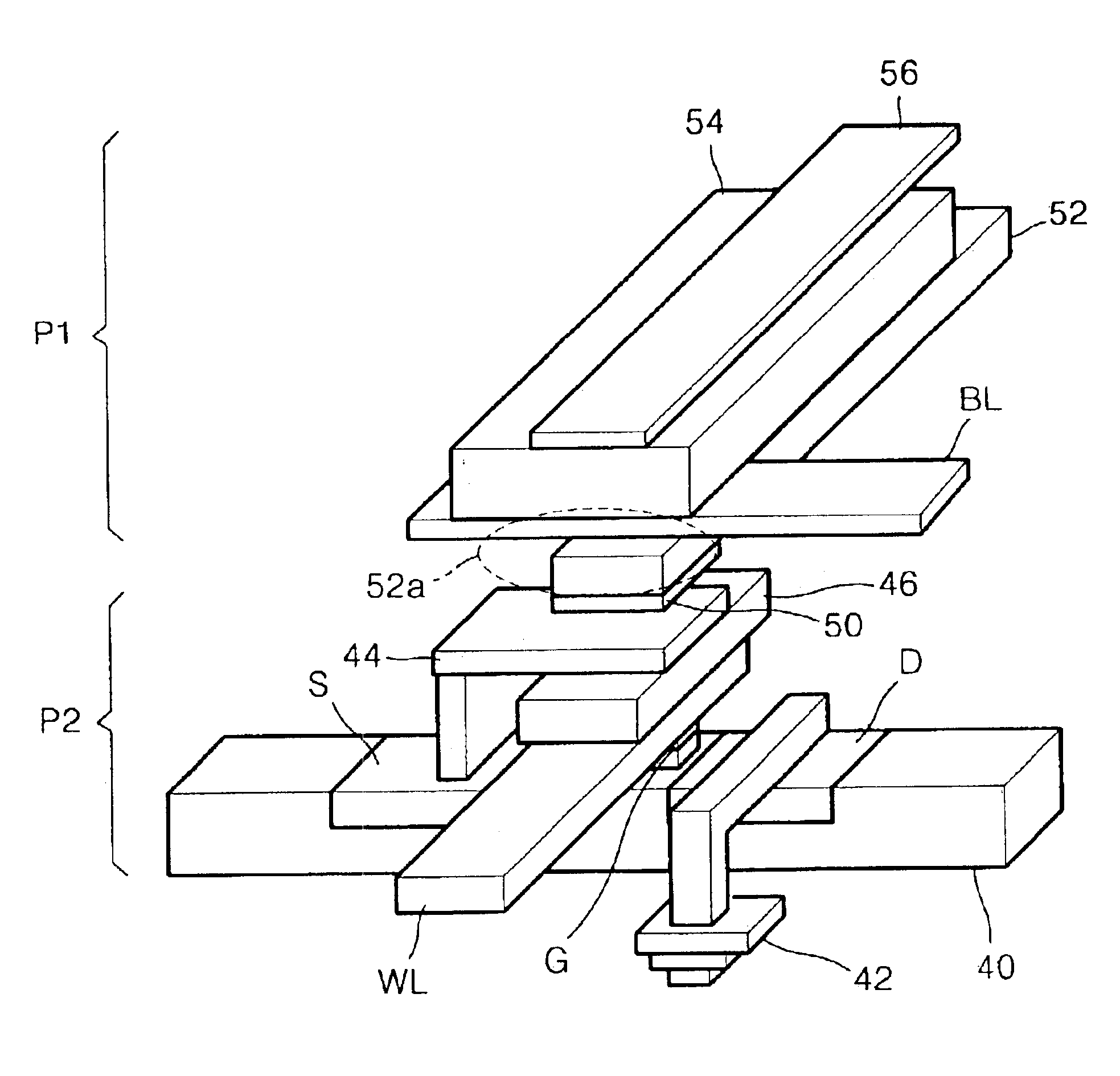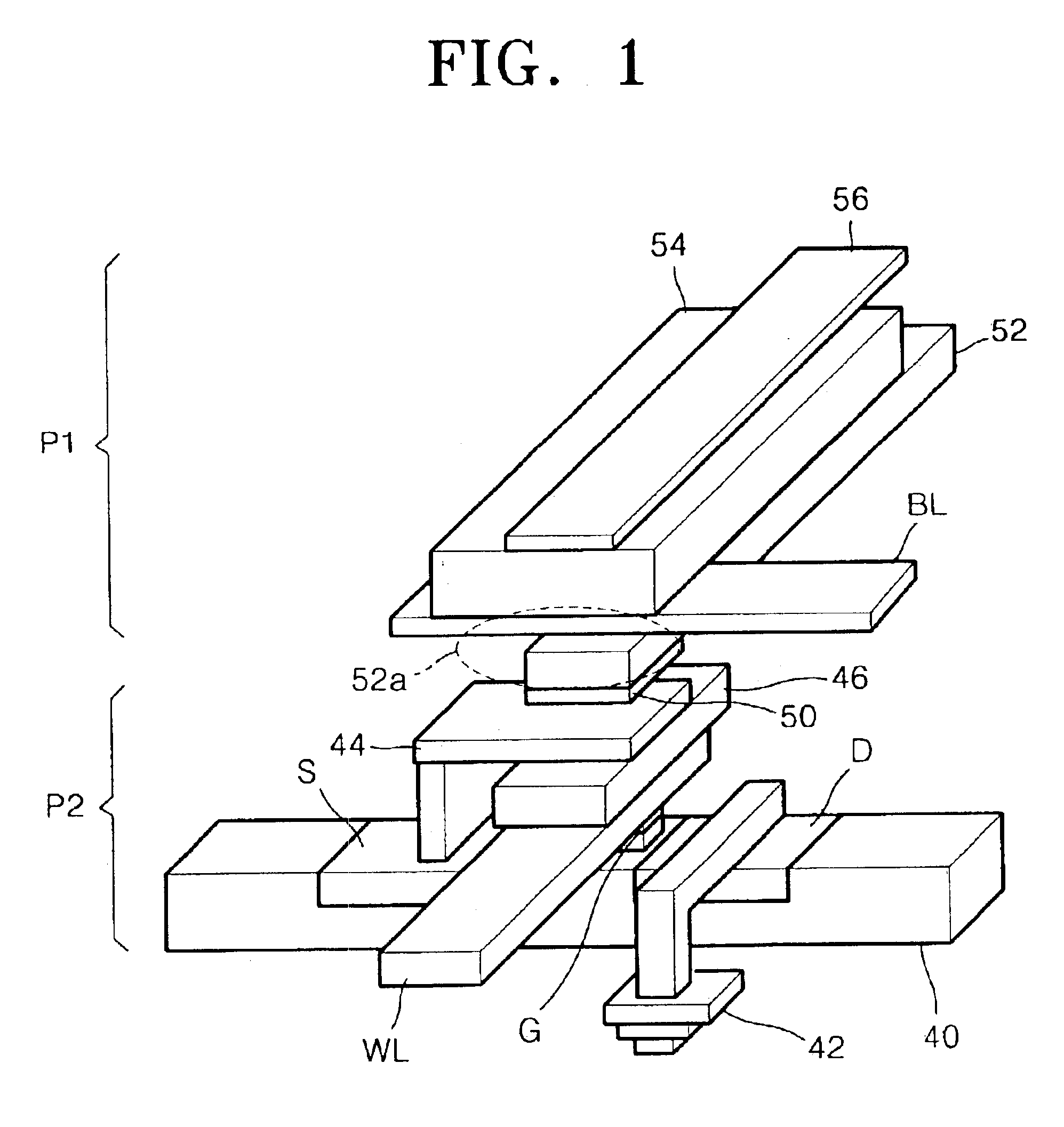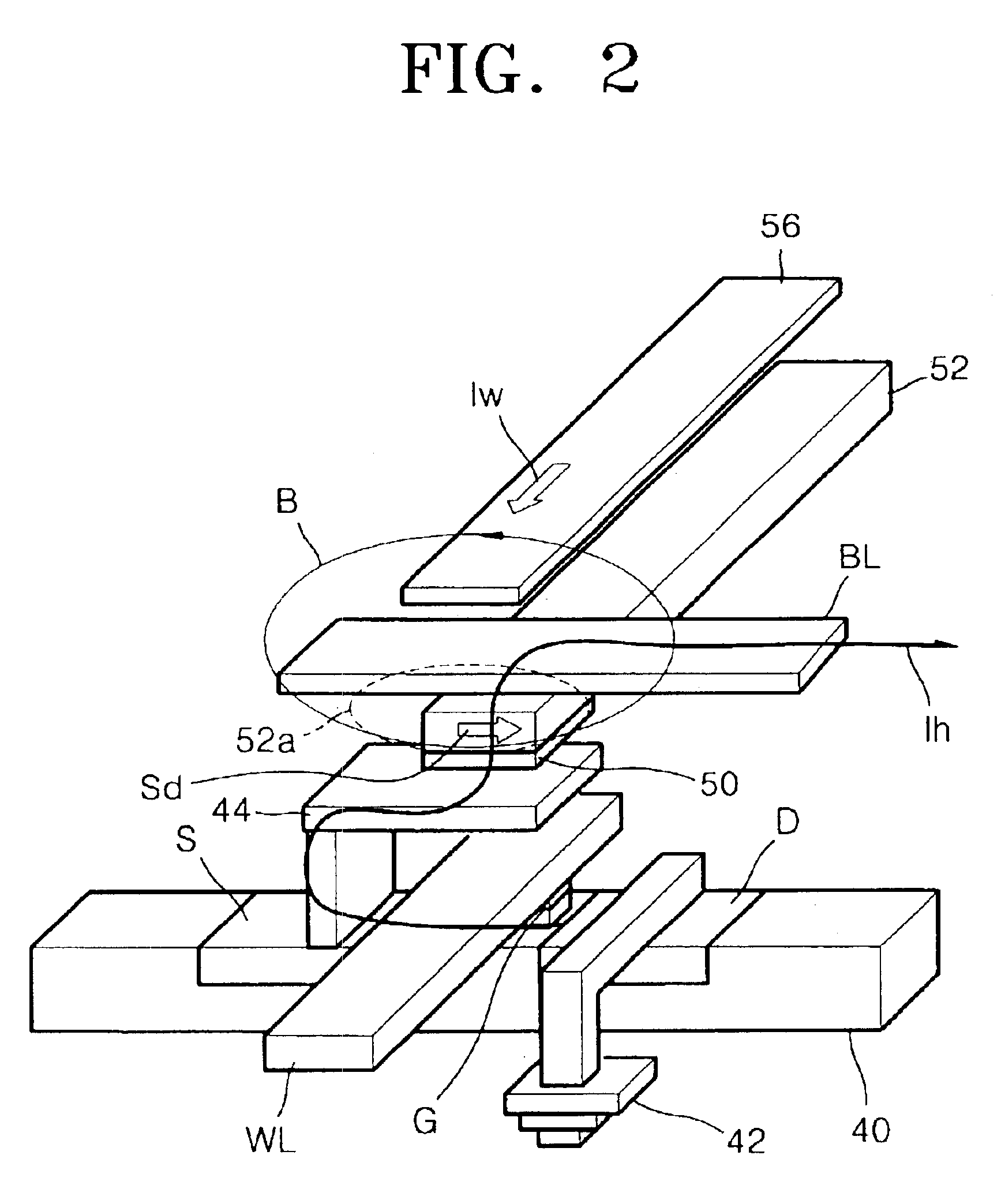Magnetic random access memory (MRAM) for spontaneous hall effect and method of writing and reading data using the MRAM
a random access memory and spontaneous hall effect technology, applied in the field of random access memory, can solve the problems of increased noise, shortening the operating time of the cell, and degrading so as to improve the thermal security of the cell, increase the coercivity, and high integration
- Summary
- Abstract
- Description
- Claims
- Application Information
AI Technical Summary
Benefits of technology
Problems solved by technology
Method used
Image
Examples
Embodiment Construction
[0029]Korean Patent Application No. 2002-35141, filed on Jun. 22, 2002, and entitled: “Magnetic Random Access Memory (RAM) Using Thermo-Magnetic Spontaneous Hall Effect and Method of Writing and Reading Data Using the Magnetic RAM,” is incorporated by reference herein in its entirety.
[0030]The present invention will now be described more fully hereinafter with reference to the accompanying drawings, in which preferred embodiments of the invention are shown. The invention may, however, be embodied in different forms and should not be construed as limited to the embodiments set forth herein. Rather, these embodiments are provided so that this disclosure will be thorough and complete, and will fully convey the scope of the invention to those skilled in the art. In the drawings, the thickness of layers and regions are exaggerated for clarity. Like numbers refer to like elements throughout.
[0031]A magnetic random access memory (MRAM) according to an embodiment of the present invention is...
PUM
 Login to View More
Login to View More Abstract
Description
Claims
Application Information
 Login to View More
Login to View More - R&D
- Intellectual Property
- Life Sciences
- Materials
- Tech Scout
- Unparalleled Data Quality
- Higher Quality Content
- 60% Fewer Hallucinations
Browse by: Latest US Patents, China's latest patents, Technical Efficacy Thesaurus, Application Domain, Technology Topic, Popular Technical Reports.
© 2025 PatSnap. All rights reserved.Legal|Privacy policy|Modern Slavery Act Transparency Statement|Sitemap|About US| Contact US: help@patsnap.com



